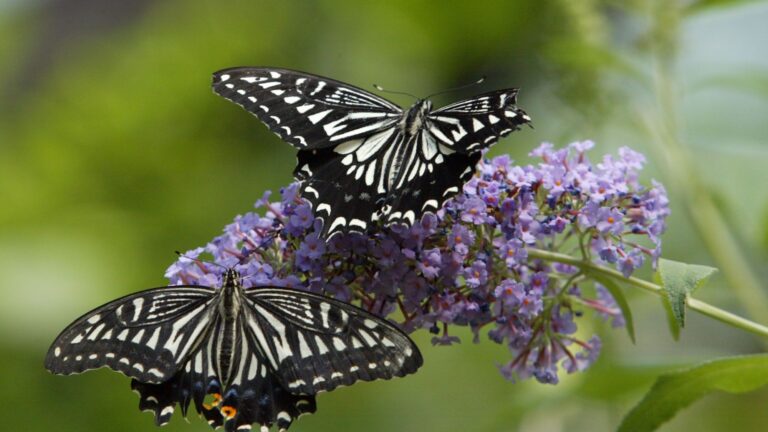Ask the Gardener: The best vines to plant to climb your pergola
Ask the Gardener’s Carol Stocker offers ideas for pretty flowering plants that will do well in this climate. Get more gardening advice at realestate.boston.com.

What to do this week: The garden can be dismaying at this time of year, a green wall of weeds that makes you wonder why you ever tried to grow plants so far from the house. Take heart! This is normal. Gardens look fresh and inviting in the spring, so remember last May. Don’t sweat the small stuff. Just remove weeds that are about to go to seed or are dangerously invasive. (Don’t compost them.) If you decide you don’t want to maintain that extra bed, this is the best time to grass it over or to plant fruiting or flowering landscape shrubs such as winterberry or viburnums. Mulch the area around them to cover your retreat. Finish planting or moving evergreens by mid-October.
Q. We want a flowering vine to replace the old Concord grapes on our pergola. What should we plant?
M.F., Milton
A. Be wary when planting unfamiliar vines, especially those of foreign origin. Many can become invasive, popping up all over. Stay away from orange-flowered trumpet vine (Campsis) or ivy (Hedera). Many also find the commonly sold Chinese and Japanese wisterias too aggressive. Their python-like twists can be a threat to any wooden structure. Vines native to our area are usually better behaved. They evolved here, so they’re not ecological wild cards. I grow the native America wisteria frutescens variety ‘Amethyst Falls,’ which has only a third of the vigor of the Asian wisterias. That’s plenty for me. (Incidentally, “vigor’’ usually means more leaves and stems, not a bounty of flowers.) Also avoid invasive Asian honeysuckles, but look for the great native one Lonicera sempervirens, with red/orange/yellow tubular flowers that draw hummingbirds. I like native Virginia creeper (a.k.a. Parthenocissus quinquefolia), but only in a wild setting, not on a pergola. The one native vine I really regret planting is Dutchman’s pipe (Aristolochia macrophylla), so skip that one unless you enjoy weeding. What about the king and queen of flowering vines, roses and clematis? So-called climbing roses do not really climb. They must be lashed to the pergola like sails to a yardarm and often do not drape well. Clematis do climb on their own, but the ones with the large flowers are frustrating and shy with blooms. The more floriferous small-flowered Clematis viticella, montana, and texensis types are the best to try, as they bloom longer and don’t suddenly wilt and die. I once grew C. montana on an arbor, and it looked very pretty. I’ve have had good luck with ‘Betty Corning,’ but avoid sweet autumn clematis, which can become a pest.
Dear Carol
A.T. ’’Bunny Hater’’ in Newton: Bunnies, bunnies everywhere! They are eating all of the plants in my garden. We planted hostas in our backyard, and they are chewing them up. We cover the plants in spicy garlic oil, and it seems to help.
Carol: Many readers are complaining that this is the worst year ever for rabbits. I guess every population has its spikes. Last year it was chipmunks.
Send questions and comments, along with your name/initials and community to [email protected]. Subscribe to our newsletter at pages.email.bostonglobe.com/AddressSignUp. Follow us on Facebook and Twitter @globehomes.







Conversation
This discussion has ended. Please join elsewhere on Boston.com